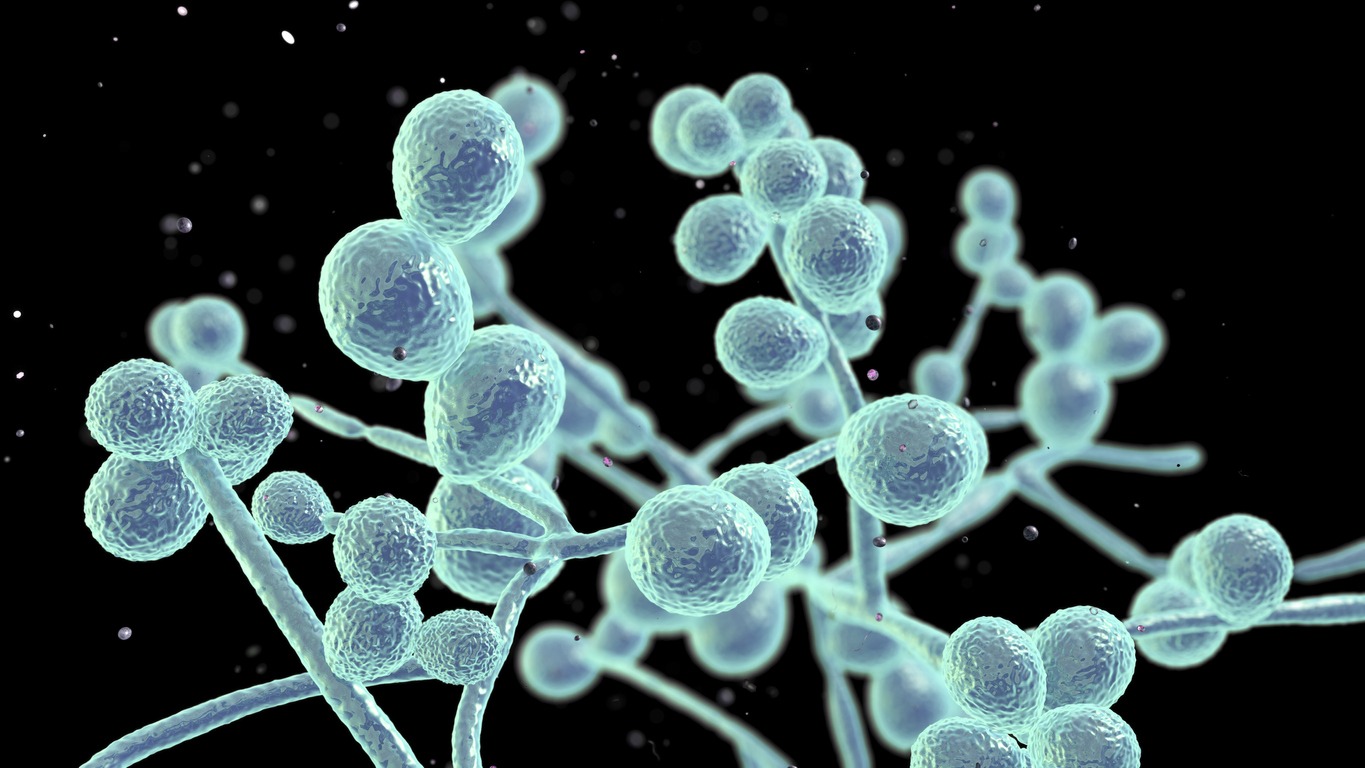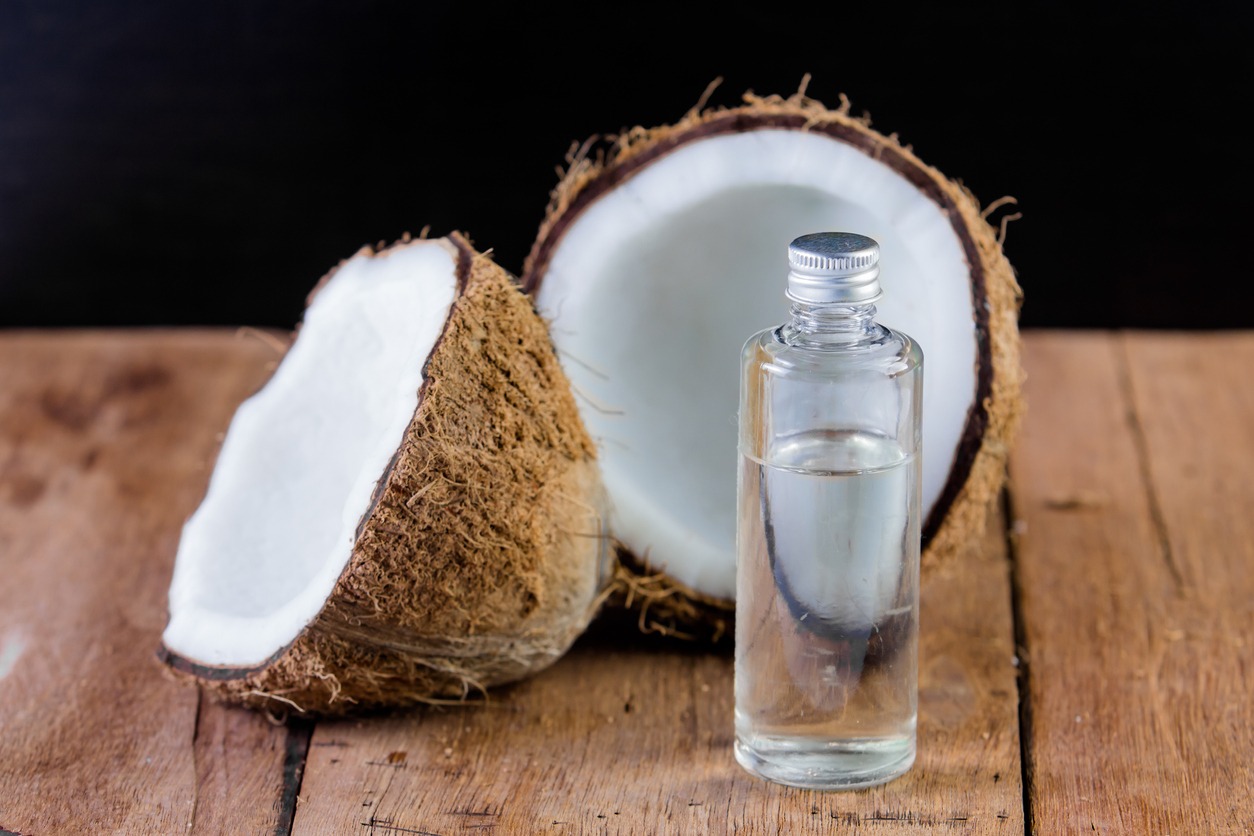Disclaimer: This article is for informational and educational purposes only and does not substitute professional medical advice. It is important to always consult a medical professional for any health issues.
The human body contains millions of microbes, and these include fungi and bacteria. Some of them are good, some are bad, and some are dose-dependent. However, when the balance of this delicate ecosystem is incomplete, early research show it can be associated with things like autoimmunity, cardiovascular diseases, and weight gain.
One of the microbes that can impact a person’s health is Candida. However, Candida is not actually bad itself. In fact, the body needs a certain amount of Candida to stay balanced and healthy. Long-term and short-term health issues only arise with Candida overgrowth, which is a condition when Candida grows out of control.[1]
If you are wondering what you can do in case you suffer from Candida overgrowth, we are here to help you. In this post, we are giving you tips and treatments for Candida.
What is Candida?
Candida is a member of the fungal family. However, it is usually referred to as yeast. It naturally coexists along with other microorganisms in different areas of the body, such as the skin, throat, mouth, gastrointestinal tract, and vagina. Candida aids individuals in keeping a favorable balance of microbes in these many areas. It also helps support the immune system, promote vitamin and mineral absorption, and aid in digestion in healthy amounts.
But if your body develops a Candida overgrowth, also known as candidiasis, it may upset the delicate equilibrium of your body’s numerous ecosystems. This results in a host of not-so-pleasant symptoms. Some of the different types of Candida overgrowth are common. For instance, thrush is the term used to describe an excess of Candida in the mouth. On the other hand, a yeast infection refers to the excess of Candida in the vagina. But there are also other ways Candida overgrowth can manifest.[1]
Symptoms of Candida Overgrowth
The signs and symptoms of Candida overgrowth depend on its cause. But the most common Candida overgrowth signs and symptoms include skin changes, such as acne and eczema flares, bowel issues like diarrhea or constipation, mood changes, inability to lose weight, and fungal infections of the skin and nails. Aside from these, Candida overgrowth may also cause a strain on your immune system, which can make you more likely to get sick.
Types of Candida Overgrowth
A yeast-like fungus called Candida is the source of the fungal infection known as candidiasis. People can become infected by some types of Candida. Candida albicans is the most prevalent. Candida typically coexists with healthy skin and parts of the body like the mouth, throat, gut, and vagina without posing any health risks. If it spreads unchecked or if it gets deep into the body, Candida can result in infections. It might, for instance, lead to bloodstream infections or infections of internal organs like the kidney, heart, or brain.
Below are the different types of Candida overgrowth or candidiasis:
Vaginal Candidiasis
This condition is also called vulvovaginal candidiasis, Candida vaginitis, or vaginal yeast infection. If vaginal conditions change to favor Candida growth, an infection may result. Infections may be more likely to occur as a result of factors such as hormones, medications, or immune system abnormalities.
Some of the symptoms of vaginal candidiasis include vaginal itching or soreness, pain during sexual intercourse, discomfort or pain when urinating, and abnormal vaginal discharge. Vaginal candidiasis is common in women who are pregnant, use hormonal contraceptives, have diabetes, have a weakened immune system, or those taking or have recently taken antibiotics.
Most of the time, this condition is mild. However, some women can get severe infections that result in vaginal wall cracks, edema, and redness. Therefore, if you have any of these symptoms, it is important to contact your doctor immediately.[2]
Infections of the Mouth, Throat, and Esophagus
Additionally, candida typically coexists without issue on the skin and inside the body in areas including the gut, throat, and mouth. However, Candida can sometimes multiply and cause an infection, especially if the environment inside these parts changes and encourages fungal growth. Candidiasis in the mouth and throat is referred to as thrush or oropharyngeal candidiasis. If it is in the esophagus, it is called esophageal candidiasis, which is common in people living with HIV/AIDS.[2]
Candida overgrowth in the mouth and throat may have different symptoms, such as white patches on the throat, the roof of the mouth, tongue, and cheeks, loss of taste, cotton-like feeling in the mouth, redness or soreness, pain when swallowing, and cracking or redness at the corners of the mouth.
In healthy people, candidiasis of the mouth, throat, or esophagus is infrequent. Those who are at higher risk for acquiring it include babies, people who wear dentures, have diabetes, have cancer, have HIV/AIDS, those who take antibiotics, and those who smoke. Therefore, it is important to always maintain good oral health to prevent candidiasis in the mouth or throat.[2]
Invasive Candidiasis
This is an infection caused by Candida, and unlike infections in the mouth and throat or vaginal yeast infections, invasive candidiasis is more serious. It’s because it can affect the blood, brain, bones, heart, eyes, and other parts of the body. A bloodstream infection with Candida called Candidemia is a common infection in hospitalized patients.
Most people who develop invasive candidiasis are usually already sick from other medical conditions. Therefore, it is quite difficult to determine the symptoms related to a Candida infection. But the most common ones are fever and chills that do not improve after antibiotic treatment for suspected bacterial infections.[2]
Causes of Candida Overgrowth
Candida can become out of control due to a variety of dietary, lifestyle, and medical causes. Below are some of them:
Use of Antibiotics
According to chapter 18 of Polymicrobial Diseases, if you recently took antibiotics, you may be more susceptible to Candida overgrowth since medications eradicate the microorganisms that keep Candida under control. Candida cannot grow if these bacteria are present.[1]
Diet High in Sugar and Processed Foods
A high-sugar, high-carbohydrate diet may also increase your risk of developing Candida overgrowth. It’s because Candida and yeast feed off of sugar. Therefore, eating lots of foods rich in sugar and starch will feed yeast further, which may lead to Candida overgrowth.[1]
Weak Immune System
Candida overgrowth frequently occurs while your immune system is still compromised and you are healing from an illness. It’s because it is opportunistic. Therefore, if it sees a little crack in the armor of your body, it will take advantage of that weakness. Also, if you use antibiotics while you are sick, that will be like a double-hit.[1]
Stress
The ecology and bacteria that live in the gut can evolve as a result of excessive stress. Being under a lot of stress may worsen any imbalance in your bowel that already exists as a result of your diet, the use of antibiotics, or other factors. It may also encourage the growth of yeast like Candida.[1]
Hormonal Imbalances
Candida overgrowth can also worsen due to the things that affect your hormones, such as taking hormonal birth control pills. A Candida overgrowth yeast infection is typically more common in women with increased estrogen levels, particularly pregnant women. This is because estrogen acts like a fertilizer for Candida. But researchers are still studying how exactly estrogen triggers the growth of Candida.[1]
Treatments for Candida Overgrowth
Treating Candida overgrowth permanently may involve different strategies. It also depends on where it is growing in the body. For example, Candida overgrowth on the skin may need topical treatments along with other strategies. Below are some of the different tips and treatments that you can try to end Candida overgrowth permanently:
Follow a Candida Diet
This is among the best ways to naturally cure Candida overgrowth permanently. A Candida diet is a full, anti-inflammatory, low-sugar diet that helps good gut health. It also helps eliminate the sugars that feed Candida. When you add specific types of food to your diet and eliminate others, you’ll be able to starve the yeast that your body is producing and prevent them from returning.[3]
One of the most frequent reasons for Candida overgrowth is a diet heavy in processed and sugary foods. Therefore, in order to cure it, you need to eliminate foods that are high in refined carbohydrates, sugar, starch, alcohol, and caffeine. Cutting out food and drinks like mushrooms, wine, vinegar, sugar, some dairy products, refined carbs, and processed foods will help starve the yeast.
You need to stop eating those things and start eating foods that are healthier, such as non-starchy veggies, low-sugar fruits, lean proteins, nuts, seeds, herbs, healthy fats, and probiotic-rich meals.[3]
Take Supplements
You can also treat Candida overgrowth permanently by starting to add supplements to your diet. You can try supplements like Berberine, Caprylic Acid, Activated Charcoal, Milk Thistle, Grapefruit Seed Extract, and Olive Leaf Oil. All of these are very beneficial in fighting off Candida and other types of fungi and bacteria that can affect the body negatively.[3]
Use Essential Oils
Using essential oils can also help in curing Candida overgrowth naturally and permanently. Some of these include eucalyptus oil, clove oil, tea tree oil, oregano oil, thyme oil, and peppermint oil. However, if you intend to use essential oils, it is important to do your research and make sure that you understand how to use them.
Remember that some oils should not be consumed and that many of them require the addition of a carrier oil in order to be safely applied. Based on studies, essential oils have antifungal and antibacterial properties that may help control and alleviate Candida overgrowth without removing the beneficial microbiomes in the gut.[3]
Use Coconut Oil
Coconut oil contains antimicrobial properties, making it effective in fighting off and curing Candida overgrowth. The combination of caprylic acid and lauric acid in coconut oil can help kill harmful bacteria like Candida through topical application and ingestion.[3]
Practice Oral Hygiene Regularly
Rinsing with mouthwash is one of the best ways for people with thrush to lessen their discomfort and treat Candida overgrowth. Always remember to brush your teeth and keep your mouth clean after every meal. You can also choose mouthwashes that contain deionized water, USP natural glycerin, and hydrogen peroxide, as they are potent in killing germs, bacteria, and fungi in the mouth.
Take Probiotics
Probiotics like lactobacillus acidophilus and lactobacillus rhamnosus can also fight off Candida. These are usually found in foods like yogurts, sauerkraut, miso, tempeh, kefir, and more. Probiotics can help cure Candida overgrowth by repopulating the good bacteria in the body. It can help the gastrointestinal tract and the vagina to maintain a healthy pH.
Based on studies, probiotics can cure Candida overgrowth and prevent it from occurring again. If you want to treat Candida with probiotics, you should at least take one that has 1 billion colony-forming units (CFUs).[3]
Keep Your Liver Healthy
The liver is responsible for detoxifying the body. If it is not functioning properly, it will not be able to get rid of toxins, such as Candida overgrowth. Therefore, to support your liver, you need to maintain a healthy weight, eat a balanced diet, exercise regularly, limit your alcohol consumption, monitor medication uses, and more. You may encourage your body to naturally get rid of excess Candida by doing these.[3]
Keep Your Hormone Levels Balanced
Ensuring that your hormone levels are balanced is one of the major contributing factors to curing Candida overgrowth naturally and permanently. According to studies, elevated estrogen levels also promote Candida growth and survival within the body. This happens during pregnancy, before getting periods, or when approaching menopause.
If you are having difficulties with estrogen dominance, there are things that you can do to help. These include eating a fiber-rich diet, reducing stress levels, improving your gut health, and avoiding hormonal birth control.[3]
Focus on Sleep, Exercise, and Stress Reduction
Aside from diet, there are other lifestyle factors that affect your gut health, and these include stress, movement, and sleep. Therefore, if these things are not optimized, they can further aggravate Candida and cause an imbalance in the body.[1]
Therefore, to increase your chances of balancing out Candida, you need to make sleep, exercise, and stress reduction a priority. You need to get at least seven hours of sleep each night. Try to find a calming activity that you can do an hour or two before sleeping that may help lower your stress and get your body ready to sleep.
Walking and yoga are also excellent forms of light exercise that you may do throughout the day, especially if you’re trying to cut back on or eliminate sugar and carbohydrates. If you’re transitioning to a lower carbohydrate diet, you could initially feel really low on energy. Therefore, throughout your treatment for Candida overgrowth, you may want to engage in restorative exercises such as yoga, Pilates, and gentle walking over more intense exercise.[1]
Add Medication When Needed
Both diet and lifestyle changes may fundamentally increase your chances of treating Candida overgrowth. But there are times when the condition requires stronger measures. When the growth is significant, doctors may use all the tools at their disposal and treat it with prescription-strength antifungals. They are taken at a little lower dose for a longer period of time and are pretty comparable to what you could take to treat an infection.[1] Therefore, if your Candida overgrowth is significant, do not hesitate to visit a doctor, as they can provide you with the right treatments that you need.
You can also read our Guide to Selecting Creams to Deal with Fungal Infections for more information.
Conclusion
It is indeed very important to treat Candida overgrowth immediately to prevent it from becoming worse. Keeping your body healthy by eating nutritious foods, getting enough sleep, and exercising regularly can contribute to the treatment and prevention of Candida overgrowth. And if the treatments we shared in this post do not work for you or you notice the condition worsening, it is best to consult your doctor immediately for other treatments and medications. We hope this post helped you learn more about the tips and treatments for Candida.
References
[1] Bedosky, L. (2020, February 3). Candida overgrowth symptoms & treatment: How to get rid of Candida. Parsley Health. Retrieved December 5, 2022, from https://www.parsleyhealth.com/blog/how-to-get-rid-of-candida-overgrowth/
[2] Centers for Disease Control and Prevention, E. (2022, June 28). Candidiasis. Centers for Disease Control and Prevention. Retrieved December 5, 2022, from https://www.cdc.gov/fungal/diseases/candidiasis/index.html
[3] Sergi, D. D. (2021, June 21). How to cure Candida naturally and permanently. Holistic Nutritionist In Brooklyn, NY. Retrieved December 5, 2022, from https://www.healthieruny.com/resources/how-to-cure-candida-naturally-and-permanently















